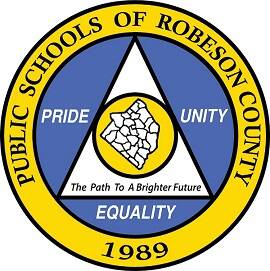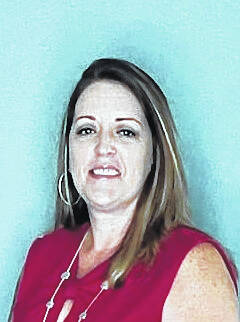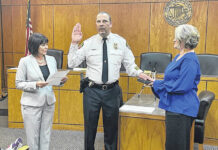LUMBERTON — The Public Schools of Robeson County is seeing substantial growth in the recent North Carolina State Assessments and credits the implementation of multiple instructional initiatives.
Based on North Carolina end-of-grade and end-of-course preliminary data, PSRC is projecting increases in Grades 3-8 reading by more than 30% and a more than 90% increase in proficiency in mathematics among its students. Implemented instructional practices in Grades 5 and 8 science should lead to a more-than-double-digit increase in proficiency, according to the school district.
The North Carolina EOG tests are standards-based achievement tests in the areas of reading and mathematics in grades 3–8 and science in grades 5 and 8.
The North Carolina EOC tests are used to sample a student’s knowledge of subject-related concepts as specified in the North Carolina Standard Course of Study and to provide a global estimate of the student’s mastery of the material in a particular content area. Students are assessed in English II, Math I and III, and Biology
“We believe these same implemented instructional initiatives will lead to double-digit increases in proficiency at the high school level in Biology, Math 1, Math and English II,” a release from the school district read in part. “While these scores have not been certified by the State Board of Education, the Public Schools of Robeson County is very pleased to see that our efforts to improve instruction have made a difference in the classrooms across the district.”
Leadership training and principal support
PSRC initiated a plan with the district’s administrators to develop leadership skills within and among its staff to increase the school district’s ability to develop and implement plans, respond to changing conditions, reduce conflict and produce results for students.
In the summer of 2021, 12 PSRC schools were identified to participate in the RELAY graduate school program. Identified principals, teachers and central office personnel were trained on the RELAY graduate school protocols.
During the month of November, the identified PSRC schools participated in school visits centered around the use of the Observation and Feedback protocol. These visits included the selected school principals, identified central office staff, and NC Department of Public instruction personnel.
The visits were led by the Relay coaches at the high-touch schools, which are defined as a school that already has an existing effective leader as demonstrated by their previous successful performance. Low-touch school principals participated in the Relay visits with a partner high-touch school.
The visits included the teams highlighting accolades within each school as well as providing measurable “bite-size action steps” based on the classroom observations that will support increasing the rigor of instruction. High-touch schools received weekly coaching and support through their Relay coach. In addition, the identified central office staff members provided coaching to the low-touch schools.
Due to the success of the initial 12 participating principals, the remaining district principals were also introduced to the Relay graduate school program. Through this program, they focused on the components of Leverage Leadership. Those components consisted of real-time feedback and aggressive monitoring. Real-time feedback was given immediately to the teachers during principal observations which were conducive to higher achievements and success for students across the board. In addition, being trained on how to aggressively monitor students in the midst of classroom instruction contributed to the success of students during the recent state assessments, according to the school district.
Schools established a School Improvement Team (SIT) that involved stakeholders and developed a plan to improve specific areas of the school including positive student outcomes, professional practices focused on literacy and mathematics, and a focus on strengthening family and community engagement.
“Schools were provided with coaching in order to ensure that all decisions and processes were being thoroughly vetted and evaluated,” said Windy Dorsey-Carr, PSRC executive director of School Transformation, “School improvement is an ongoing process and the extra support given to principals and SIT team members resulted in improved plans that contributed to the success of schools.”
Building teacher capacity
The district provided training for teachers in reading and math so they can effectively educate and assist students.
For reading, teachers were trained on Keys to Literacy. This required teachers to consider and focus on the process of acquiring vocabulary in order to improve students’ ability to read and comprehend. The target audience was teachers from low-performing schools in an effort to increase their reading levels and overall school performance.
Math in Practice was utilized to provide teachers with strategies to differentiate instruction in the classroom while increasing students’ problem-solving skills. The strategies included manipulatives to appeal to the students’ different styles of learning. This, coupled with regional content training, increased the teacher’s ability to teach, assess and reteach students the curriculum.
“Teachers are supported daily by the instructional leadership,” stated Amanda Graham, St. Pauls Elementary principal. “No more being told what to change, no more sending an email for you to read on something that wasn’t going well — NOW, I stop in the moment (Real Time Feedback) and show them by modeling and then coaching them through the standards.
“Teachers understand that we give grade-level work every day and all day long to ALL students. We require and hold every student accountable for his/her learning DAILY.”
Tanya Velaquez, a third-grade teacher at St. Pauls Elementary, emphasized the importance of “Culturally Responsive Teaching and The Brain,” a book faculty studied to confront biases in the classroom.
“We held hard conversations around a table to help build cultural awareness and diversity across our campus to help close learning gaps between racial groups,” Graham said. “We not only broke down standards but we would go back and focus on a standard we may not have been as successful with and found where the ‘GAP’ was in the students’ understanding to formulate a reteach plan together as a team.
“Ultimately we began our journey of building teacher capacity and strengthening our core curriculum.”
Principal Charles Locklear, of Magnolia Elementary School, attributes his school’s performance to the various professional developments and training held at the district level ensuring that the curriculum was aligned with the North Carolina Standard Course of Study.
“We became a school, which was data-driven and data-rich,” Locklear said. “The information received allowed the faculty and staff of Magnolia to differentiate instruction in order to meet the needs of all students. In addition, the district leadership team provided support and guidance with student improvement being at the forefront.”
Lewis Cox, principal of East Robeson Primary, said he could not “be more proud of the teachers and students at East Robeson Primary School and their performance, across all grades, over the past academic year.”
“Our teachers and students have been motivated, resilient and eager to perform their very best and thrived with the return of a face-to-face learning environment,” Cox said. “Through the efforts of our students, the support of our parents, community members and a team of highly-qualified and dedicated teachers and support staff, we were able to accomplish our goals. As a result, our students performed very well. We are very excited to carry this momentum forward and we are looking forward to another great year!”













